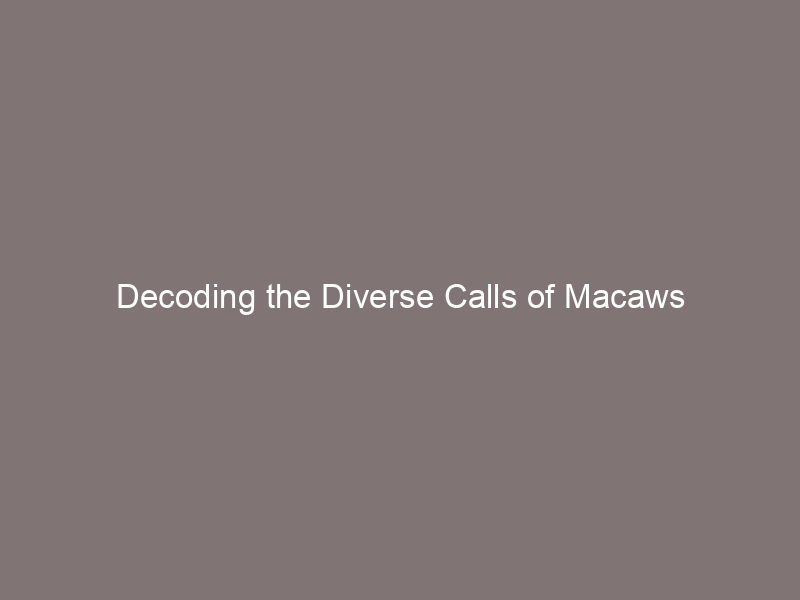
Introduction to the Majestic Military Macaw
Let’s embark on a fascinating journey to explore the world of the Military Macaw. This incredible bird species is not only a sight to behold but also plays a significant role in the animal kingdom. We’ll delve into an overview of the species and its significance in the animal kingdom.
- Overview of the Military Macaw Species
- Significance of the Military Macaw in the Animal Kingdom
The Military Macaw, scientifically known as Ara militaris, is a large parrot and a sight to behold with its vibrant green plumage, a red forehead, and a powerful beak. This bird is native to the forests of Mexico and South America. It’s known for its loud calls, strong flight, and the remarkable ability to mimic human speech.
These birds can live up to 60 years in the wild and even longer in captivity. They usually grow to about 70-90 cm in length, including their long, beautiful tails. The Military Macaw is a social creature, often seen in pairs or small groups. They are also known for their intelligence and playful nature, making them popular in the pet trade.
The Military Macaw holds a significant role in the animal kingdom. As seed dispersers, they play a crucial role in maintaining the health and diversity of their forest habitats. By eating fruits and nuts, they help in the propagation of many plant species, contributing to the biodiversity of their habitats.
Moreover, their presence in an ecosystem can be an indicator of the environmental health. A decline in their population often signals habitat loss or degradation. Therefore, conserving this species is not only about preserving a beautiful bird but also about maintaining the balance of our ecosystems.
In the following sections, we will delve deeper into the profile, diet, conservation efforts, and fun facts about the Military Macaw. Join us as we continue to explore the world of this majestic bird.
Detailed Military Macaw Profile
Let’s delve into the fascinating world of the Military Macaw and explore its unique characteristics. This section will give you a detailed profile of this magnificent bird, covering its physical appearance, size, weight, and lifespan.
Military Macaw Characteristics
The Military Macaw is a bird of many features. Let’s take a closer look at some of its key characteristics.
- Physical Appearance
- Size and Weight
- Lifespan
The Military Macaw is a sight to behold with its vibrant green plumage that blends seamlessly into the lush tropical forests it calls home. Its feathers are predominantly green, but the bird also sports a red forehead, blue lower back, and a tail tipped with red and blue. A striking feature is its large, strong beak, which is perfectly designed to crack open hard nuts and seeds.
On average, the Military Macaw measures between 70 to 90 centimeters (27.5 to 35.4 inches) in length from the beak to the tip of its tail. As for its weight, it typically ranges from 900 to 1300 grams (1.98 to 2.86 pounds). This makes it one of the larger species of macaws.
One of the most impressive characteristics of the Military Macaw is its lifespan. In the wild, these birds can live up to 60 years. However, in captivity, where they are safe from predators and have a steady food supply, they can live up to 80 years or more. This long lifespan is testament to the bird’s robust health and adaptability.
Understanding these characteristics can help us appreciate the Military Macaw’s uniqueness and the role it plays in our ecosystem. In the next section, we will explore the Military Macaw’s habitat.
Military Macaw Habitat
The Military Macaw, a magnificent bird with vibrant colors, has a specific natural habitat and geographical distribution. Let’s explore these two aspects in detail.
- Natural Habitat
- Geographical Distribution
The Military Macaw, like other parrots, prefers to live in forested areas. These birds are most commonly found in the canopies of dense forests, where they can easily hide from predators and find plenty of food. They are also known to inhabit areas with cliffs and canyons, where they nest in crevices and caves. These habitats provide them with the necessary shelter and protection they need to thrive.
The Military Macaw is native to the Americas. Their range extends from Mexico in the north, through Central America, and into South America as far south as Argentina. However, their population is fragmented, meaning they are not continuously distributed across this range but are found in scattered pockets. This is largely due to habitat loss and fragmentation, which has resulted in isolated populations.
| Habitat | Geographical Distribution |
|---|---|
| Forests, Cliffs, and Canyons | Mexico, Central America, South America |
In conclusion, understanding the Military Macaw’s habitat and geographical distribution is crucial for their conservation. By protecting these areas, we can ensure the survival of these magnificent birds for future generations.
Military Macaw Behavior
The behavior of the Military Macaw is a fascinating aspect of their profile. They exhibit unique social, communication, and reproductive behaviors that set them apart from other species. Let’s delve into these behaviors in more detail.
- Social Behavior
- Communication Methods
- Reproductive Behavior
Military Macaws are social creatures. They live in flocks and form strong bonds with their fellow macaws. They are known to engage in mutual grooming, a behavior that strengthens their social bonds. These birds are also known for their playful nature. They love to play with objects, swing from branches, and perform aerial acrobatics.
Communication is an integral part of the Military Macaw’s behavior. They communicate using a variety of vocalizations, including squawks, screams, and chatters. These sounds are used to communicate with their flock, express emotions, and alert others to danger. In addition to vocalizations, Military Macaws also use body language to communicate. For example, they may fluff their feathers when they are excited or bob their heads to show interest.
The reproductive behavior of the Military Macaw is also quite interesting. These birds are monogamous, meaning they mate for life. During the breeding season, the male will perform a courtship display to attract the female. This includes fluffing his feathers, bobbing his head, and performing a dance. Once the female accepts the male’s advances, they will mate. The female will then lay 2 to 3 eggs, which she will incubate for about 26 days.
Understanding the behavior of the Military Macaw can provide valuable insights into their needs and how to best care for them. It also highlights the importance of conserving their natural habitats, as these behaviors are closely tied to their environment.
Military Macaw Diet
Understanding the diet of the Military Macaw is crucial to understanding their needs and how to protect them. Let’s delve into their common food sources and feeding habits.
- Common Food Sources
- Feeding Habits
The Military Macaw has a diverse diet, which primarily consists of seeds, nuts, fruits, and berries. They often feast on the fruits of cacti and other desert plants. Insects and their larvae also form a small part of their diet. This variety of food sources provides them with the necessary nutrients to stay healthy and active.
Military Macaws are known for their unique feeding habits. They usually feed in the early morning and late afternoon, avoiding the hottest part of the day. They often fly long distances in search of food, demonstrating their adaptability and resilience. These birds also have a unique habit of using their strong beaks to crack open hard-shelled nuts and seeds, showcasing their intelligence and resourcefulness.
Understanding the Military Macaw’s diet is not just interesting, but it is also vital for their conservation. By protecting their food sources and habitats, we can help ensure the survival of these magnificent birds.
Military Macaw Conservation
Conservation of the Military Macaw is a topic of great importance. These beautiful birds are facing numerous challenges that threaten their survival. Let’s delve deeper into their conservation status and understand the threats they face and the efforts being made to protect them.
Conservation Status
The Military Macaw is currently listed as ‘Vulnerable’ on the International Union for Conservation of Nature (IUCN) Red List. This means that they are at high risk of becoming endangered unless the circumstances threatening their survival improve.
- Threats to the Military Macaw
- Conservation Efforts
There are several threats to the Military Macaw’s survival. The primary threat is habitat loss due to deforestation and urban development. These birds rely on large, old trees for nesting and feeding, and when these trees are cut down, the macaws lose their homes.
Illegal pet trade is another significant threat. These birds are often captured and sold as pets due to their beautiful colors and ability to mimic human speech. This not only reduces their population in the wild but also exposes them to stressful and often unhealthy living conditions.
Various organizations and governments are working hard to protect the Military Macaw. These efforts include habitat protection, breeding programs, and laws against illegal pet trade.
Habitat protection involves preserving and restoring the macaw’s natural habitat. This includes protecting old trees that are vital for the macaw’s nesting and feeding.
Breeding programs aim to increase the macaw’s population. These programs breed macaws in captivity and then release them into the wild. This helps to bolster the wild population and ensures the species’ survival.
Laws against illegal pet trade are also crucial. These laws aim to deter people from capturing and selling these birds. They also provide penalties for those who are caught engaging in this illegal activity.
In conclusion, while the Military Macaw faces significant threats, there are also substantial efforts being made to ensure their survival. By understanding these threats and efforts, we can all play a part in protecting these magnificent birds.
Role of Humans in Military Macaw Conservation
Humans play a significant role in the conservation of the Military Macaw. This role can be seen in two main ways: the impact of human activities on these birds and how we can help in their conservation.
- Impact of Human Activities
- How Humans Can Help
Human activities have both positive and negative impacts on the Military Macaw. On the negative side, activities such as deforestation, illegal pet trade, and hunting have led to a significant decrease in the population of these birds. Deforestation destroys the natural habitat of the Military Macaw, leaving them with nowhere to live. The illegal pet trade and hunting, on the other hand, directly reduce their numbers.
On the positive side, humans have the power to protect and conserve the Military Macaw. This is where our role becomes crucial.
There are several ways in which humans can contribute to the conservation of the Military Macaw. One of the most effective ways is by supporting and participating in conservation efforts. This can be done by donating to organizations that work towards the conservation of these birds, volunteering in conservation projects, or even by adopting a Military Macaw from a rescue center.
Another way to help is by spreading awareness about the plight of the Military Macaw. This can be done through social media, educational programs, and even through personal conversations. The more people know about the threats facing these birds, the more they will be inclined to help.
Lastly, we can help by reducing our impact on their natural habitat. This can be done by practicing sustainable living, reducing our carbon footprint, and supporting policies that protect the environment.
In conclusion, humans have a significant role to play in the conservation of the Military Macaw. Our actions can either harm or help these magnificent birds. It’s up to us to choose the latter.
Fun Military Macaw Facts
Now that we’ve learned about the Military Macaw’s profile, diet, and conservation efforts, let’s dive into some fun and interesting facts about this magnificent bird. We’ll explore their interesting behaviors and unique characteristics that make them truly one of a kind.
- Interesting Behaviors
The Military Macaw is known for its playful and social nature. These birds are highly intelligent and are known for their ability to mimic human speech. They can learn and repeat words and phrases, which is a fun fact that often surprises people.
Another interesting behavior of the Military Macaw is their strong bond with their mates. Once they choose a partner, they stay together for life, a trait that is quite rare in the animal kingdom. They also have a unique way of communicating with each other. They use a variety of sounds, including squawks and screams, to express different emotions and messages.
- Unique Characteristics
One of the most unique characteristics of the Military Macaw is its vibrant and colorful plumage. Their feathers are primarily green, but they also have splashes of blue and red, which makes them stand out in their natural habitat.
Another unique characteristic is their strong, curved beak. This beak is not just for show – it is a powerful tool that they use to crack open nuts and seeds, their primary food source. They also have zygodactyl feet (two toes facing forward and two facing backward), which helps them to grip branches and their food.
These are just a few of the many fascinating facts about the Military Macaw. These birds are truly unique and have a lot to offer, from their interesting behaviors to their unique characteristics. By understanding and appreciating these facts, we can better appreciate the importance of conserving and protecting these magnificent creatures.
Conclusion: The Importance of Understanding the Military Macaw
As we conclude our exploration of the majestic Military Macaw, it’s crucial to reflect on the key points we’ve learned and why understanding this remarkable bird is so important. Let’s summarize our findings and share some final thoughts.
- Summary of Key Points
- Final Thoughts on the Majestic Military Macaw
We’ve learned that the Military Macaw is a large, colorful parrot native to the forests of Central and South America. These birds have a varied diet, primarily consisting of fruits, nuts, and seeds. Their vibrant green plumage, long tails, and strong beaks make them a sight to behold in their natural habitats.
Unfortunately, the Military Macaw is currently listed as a vulnerable species due to habitat loss and illegal pet trade. Conservation efforts are in place to protect these magnificent creatures and their habitats. We’ve also discovered some fun facts about these birds, such as their ability to mimic human speech and their long lifespan of up to 60 years.
Understanding the Military Macaw is not just about appreciating its beauty and unique characteristics. It’s also about recognizing the challenges these birds face in their natural habitats and what we can do to help. By learning about the Military Macaw, we become more aware of the importance of conservation efforts and the role we can play in preserving biodiversity.
The Military Macaw is indeed a testament to nature’s wonder, with its vibrant colors, impressive size, and fascinating behaviors. As we continue to learn and share information about these birds, we contribute to a greater understanding and appreciation of our world’s diverse wildlife.






